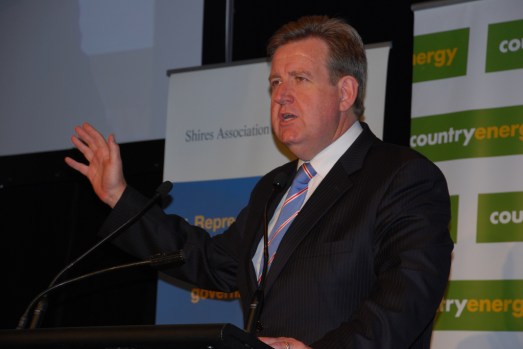By Angela Dorizas
There is more to modernisation of local government than council amalgamations and the creation of state government super-agencies, according to the New South Wales Local Government Association (LGA).
Standing orders were suspended on the first day of NSW LGA conference in Tamworth last week to allow the 600 delegates to discuss modernisation in the sector.
LGA president Genia McCaffery said there was a consensus that amalgamations were not the answer and a “much broader brushstroke approach to change” was required.
“It was a really good discussion and I think it’s one that we’re going to continue and I think there’s real recognition in the sector that unless we sit down and determine our own future the State Government will determine it for us,” Cr McCaffery told Government News.
“It’s much better that we have that discussion along with our communities rather than having reform thrust on us by Macquarie Street and end up with massive councils.”
Cr McCaffery rejected findings of a new report by the Association of Consulting Engineers Australia (ACEA), which called for a consolidation of local urban councils in the Sydney basin, reducing the total number of councils from 42 councils to just 11.
“They have no idea obviously of what local government is,” Cr McCaffery said.
“The beauty and the strength of local government is its capacity to actually relate to local communities. I think making massive regional councils isn’t the answer.”
The ACEA also recommended that the Department of Local Government be abolished and its functions merged into a new super-department of planning and local government.
Cr McCaffery said it was an “eminently sensible idea” but one which was unlikely to succeed.
“We had the Department of Planning and Infrastructure under Craig Knowles and it didn’t work,” she said.
Conference delegates also renewed their call for the State Government to abandon rate pegging within the next three years.
Cr McCaffery said the new Integrated Planning and Reporting framework would remove the need for rates to be capped, because council financial plans would be developed in consultation with communities.
“The plan you develop is in consultation with the community – the community agrees to a level of infrastructure and services and then along with that community plan is a finance plan and that will reflect the level of rates that you need to deliver that.”
At last year’s LGA conference Premier Nathan Rees announced that he would consider scrapping rate pegging if there was a consensus for its removal among councils and their communities.
According to Cr McCaffery, the Premier and his Local Government Minister Barbara Perry have fallen silent on the issue.
“He’s gone very quiet on that,” Cr McCaffery said.
“We’ll be making that a very strong issue in the state election.”
Comment below to have your say on this story.
If you have a news story or tip-off, get in touch at editorial@governmentnews.com.au.
Sign up to the Government News newsletter

